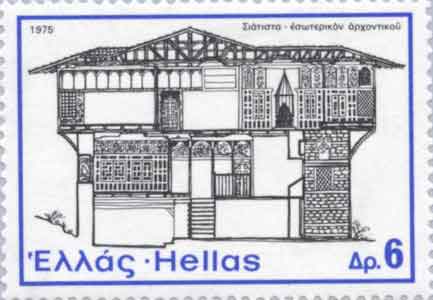.
Administrative Region : West Macedonia
Regional unit : Kozani
Siatista (Greek: Σιάτιστα) is a town and a former municipality in Kozani peripheral unit, West Macedonia, Greece. Since the 2011 local government reform it is part of the municipality Voio, of which it is the seat and a municipal unit.[1] It lies 28 km southwest of the city Kozani. It was built on the austral slope of the Velia mountain on an (average) height of 930 m. The first name of the city was Kalyvia, because the city was known for its huts. This name is referenced in the archives of the Zavordas Monastery.
History

In 1745, the city is referenced in a formal document of Joseph, Patriarch of Ohrid. The commercial ties between Siatista and many European countries during 17th and 18th centuries were very successful, and allowed the inhabitants to build many mansions and churches with wonderful frescos and icons.
Siatista lies in a unique setting where its mountains and wilderness provide a strong sense of solitude. The Siatistan merchants moved abroad temporarily when they were forced out by the morass the Greek market (source?) had become and returned with material and intellectual wealth. Their famous mansions have very strong walls, imposing doors, lavishly decorated and elegant ondas, gorgeous stained glass, and lively colours of the folk paintings on the walls. All of this embodies a high standard of living for an isolated town.
In 1888 Ioannes Trampatzes, an expatriate Greek merchant in Romania, provided the funds for the Trampatzeion Gymnasium. The gymnasium housed two large libraries, the Manouseios with 5,000 tomes and the Roussopouleios with 2,000 tomes.[2]

Siatista
Siatista was liberated from the Ottoman Turks by the Greek army, on November 4, 1912.
Celebrations
August 15 - Assumption of Mary - The male inhabitants of Siatista parade with their horses down to a chapel in the plain and return with the icon of the Panagia. In the feast and party that ensues the men dance on the backs of their horses. The local wine flows freely, even for their equine friends.
December 23 - Κλαδαριές (Klatharies) - On this day the inhabitants gather brush from the surrounding area. Each neighbourhood group builds tall, (three to six metres), conical shaped mounds that are decorated sparsely with balloons and tinsel. After nightfall a parade, including a brass band playing local music, begins at the lower town, Γεράνια (Yerania). In succession each mound of brush is set afire as the parade reaches the neighbourhood. The inhabitants then dance around the fires. Many of the village youth then stay up all night around the remnants of the bonfires to start carolling early in the morning of Christmas Eve, collecting money while singing door to door.
References
^ Kallikratis law Greece Ministry of Interior (Greek)
^ Vakalopoulos, Constantinos (1996). Ιστορία του Βορείου Ελληνισμού - Μακεδονία in Greek. Εκδοτικός Οίκος Αδελφών Κυριακίδη, Thessaloniki. p. 341.
| Ancient Greece
Science, Technology , Medicine , Warfare, , Biographies , Life , Cities/Places/Maps , Arts , Literature , Philosophy ,Olympics, Mythology , History , Images Medieval Greece / Byzantine Empire Science, Technology, Arts, , Warfare , Literature, Biographies, Icons, History Modern Greece Cities, Islands, Regions, Fauna/Flora ,Biographies , History , Warfare, Science/Technology, Literature, Music , Arts , Film/Actors , Sport , Fashion --- |
Retrieved from "http://en.wikipedia.org/"
All text is available under the terms of the GNU Free Documentation License


